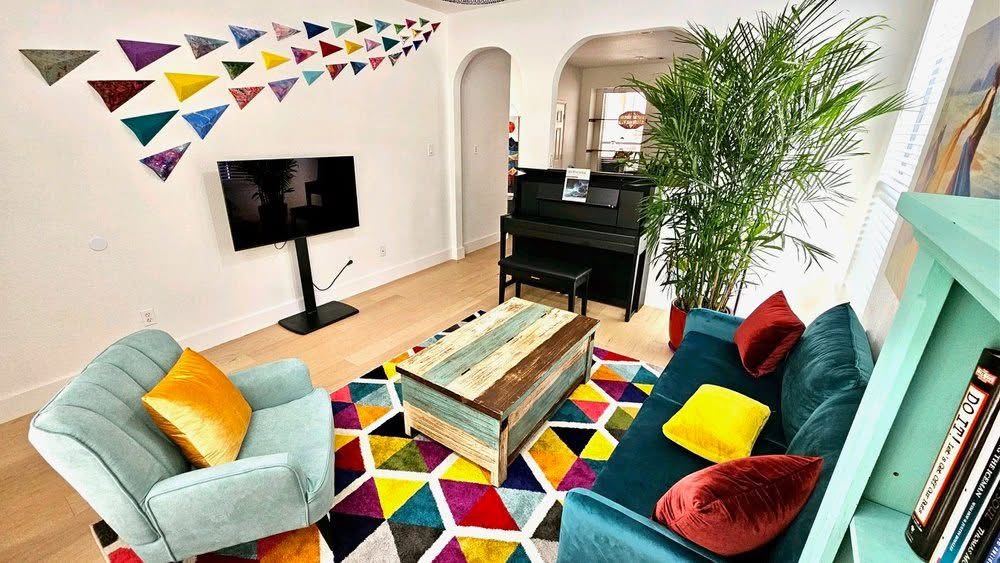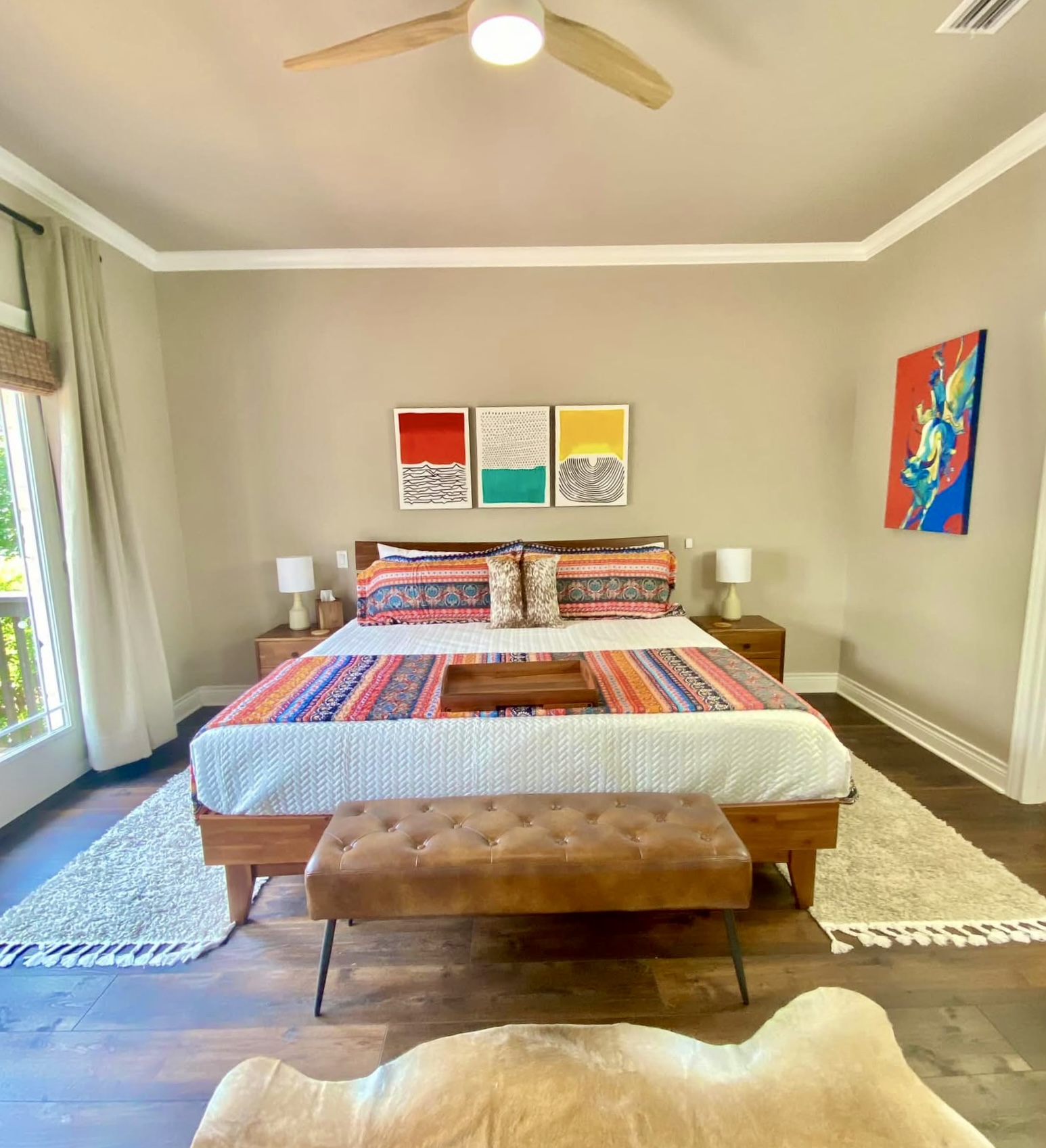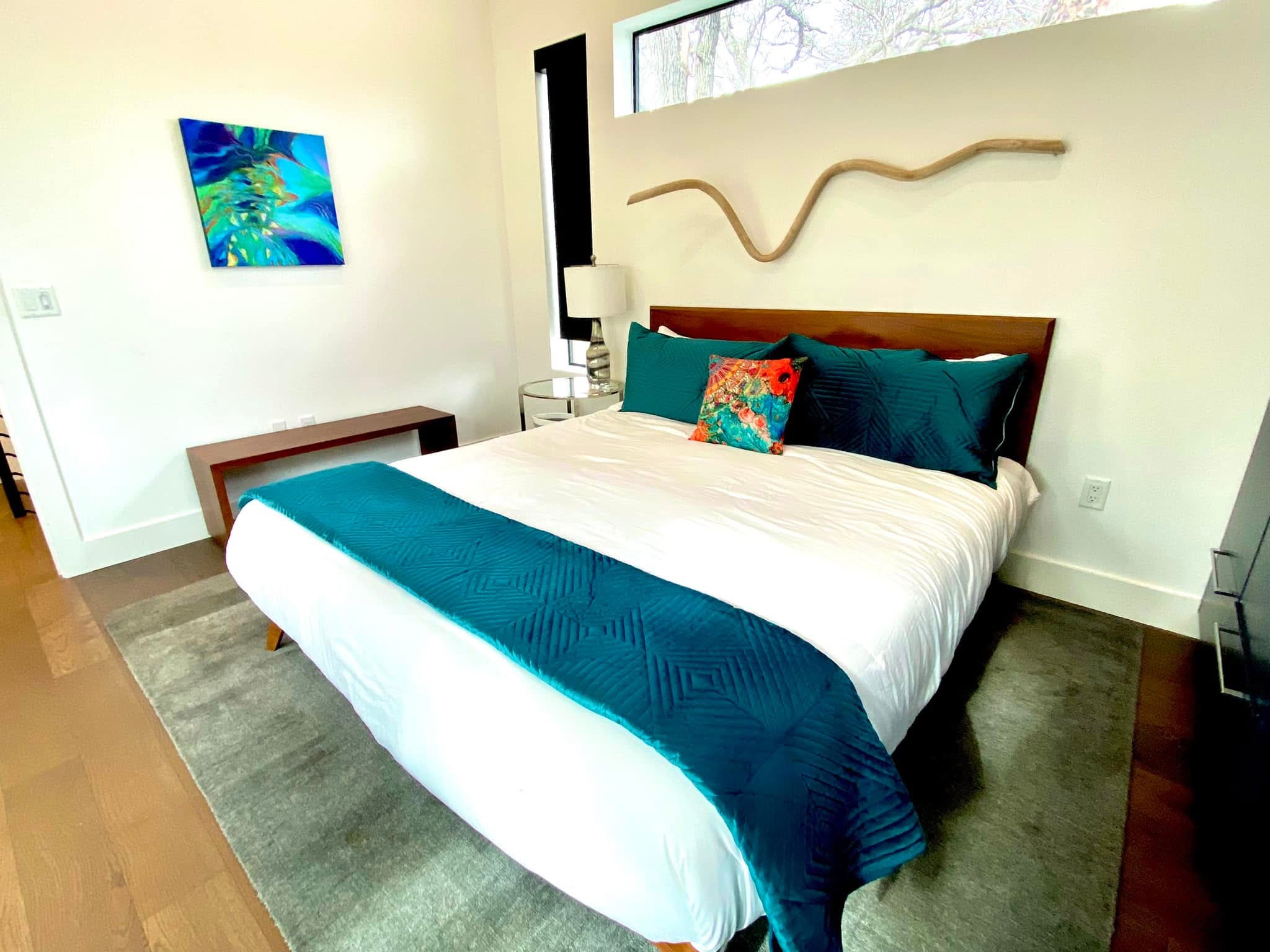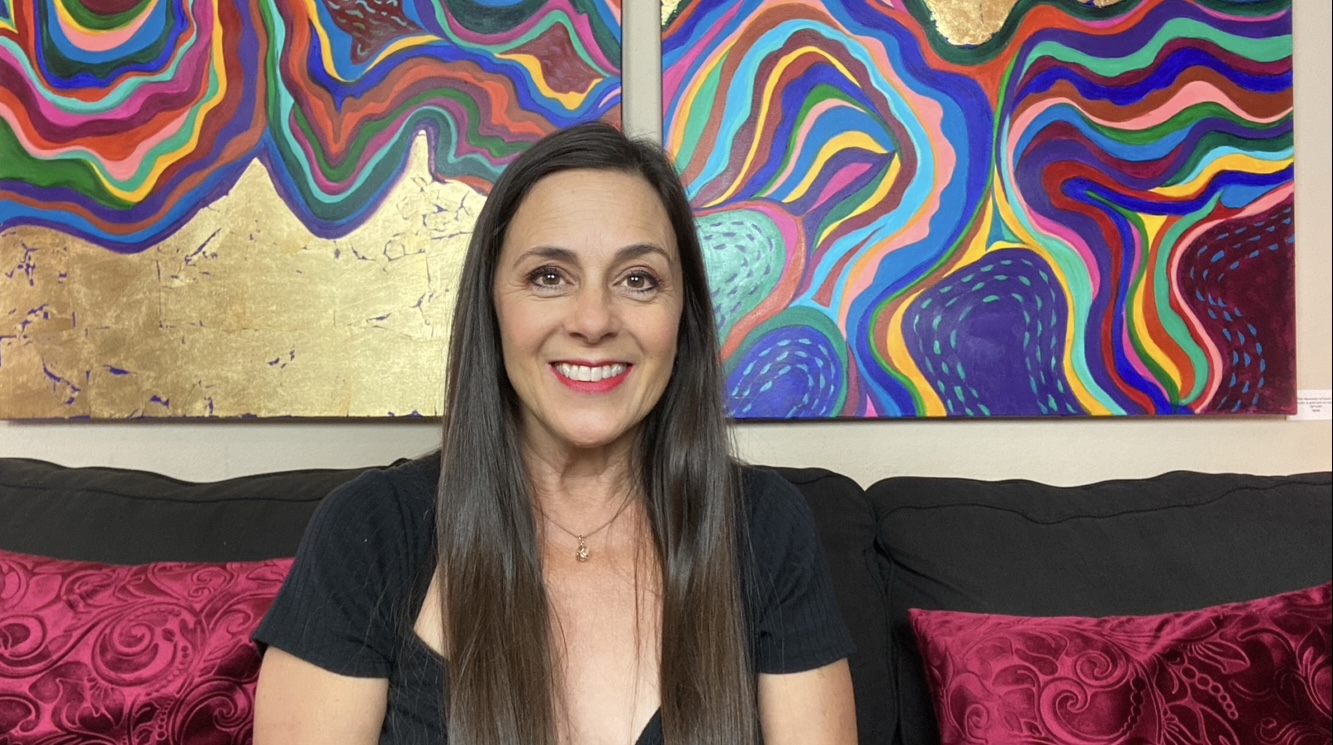We’re excited to introduce you to the always interesting and insightful Denise Roussel. We hope you’ll enjoy our conversation with Denise below.
Denise, appreciate you joining us today. So let’s jump to your mission – what’s the backstory behind how you developed the mission that drives your brand?
The Story Behind My Mission
I am the proud owner of Creating Sacred Spaces—an interior design, art, and holistic home organization company serving the Greater Austin area. When I first began this work, I didn’t even realize I was starting a business!
A little background: I moved to Austin to begin a new chapter of life while exiting a 35-year marriage and navigating profound grief after the loss of my son, Cory. Until that point, I had never fully supported myself. I began hosting Airbnb guests in my home, something I had experience with, and simultaneously dove into coaching training, inspired by the depth of my own transformation. I had already published ten books and felt drawn to help others. So I invested in professional coaching training and business development—only to realize two years later that it wasn’t quite the right path.
Around that same time, I invested my settlement in cryptocurrency, which did very well, and I made a bold decision: to take a full year off just to rest, play, and reconnect with myself. I walked. I meditated. I went to Barton Springs. I created art—something I’d done for over 30 years as a beloved hobby. That year of spaciousness changed everything.
One day, during a FaceTime call, my granddaughter exclaimed, “Wow! Your house looks like an art museum!” That comment sparked a brilliant idea: to host an interactive art show in my home. I transformed the space into a full gallery experience—with wall labels, a program with pricing, and interactive stations to engage guests with the art and with one another.
Two friends bought art that day. One of them invited me to her home to install art and help organize after a move. When I finished, she said, “You really ought to start a business doing this.” The other friend hired me to revamp a camper he used during winters in Mexico. From there, word spread—and suddenly, I was getting requests for interior design, art sales, and home organization. I didn’t plan it. It just unfolded.
That’s when Creating Sacred Spaces was born—with a mission to collaborate in designing beautiful, organized spaces around each client’s well-being and unique preferences.
My business has three interconnected “arms”:
– Interior Design
– Original Art
– Holistic Home Organization
Clients can engage with any one of these, or all three, depending on their needs. I also work with an amazing team that supports me with painting, furniture assembly, lighting, construction, and more.
One unique feature of my model is how I use design work as an organic way to offer my art in bulk. Clients often need multiple pieces to complete a space—so rather than selling one piece at a time through a gallery (and losing commission), I often sell 5–10 pieces directly to my clients. It’s a deeply personal, efficient, and mutually supportive exchange.
I’m especially proud of how quickly I streamlined key systems in my business: lead generation, client communication, file organization, contracts, and workflow. Every “mistake” has been an invitation to improve—and I’ve taken each one as a teacher.
On any given day, I might be creating a new interior design plan, organizing a home, or painting a new collection. If I’m not on a client project, I’m in the studio creating. I love how varied and creatively fulfilling this work is—and I deeply cherish the incredible clients I attract.
But for me, this work is about far more than beautifying a space. It’s an intimate co-creation. Trust is everything, and I consider it an honor to be invited into someone’s home and story. Many clients say working with me feels like therapy—and in truth, I receive just as much joy and transformation from the experience as they do.
Most recently, I’ve taken a deep dive with AI—and it has completely elevated the professionalism, efficiency, and creative range of what I’m able to offer. From communications and contracts to visual planning and design boards, AI has become a powerful co-creator that supports every aspect of my work.
I never would have imagined that I could build a business doing what I love and support myself so well in the process. But here I am—rooted in gratitude, creating sacred spaces every day.


Awesome – so before we get into the rest of our questions, can you briefly introduce yourself to our readers.
The Story Behind My Mission
I am the proud owner of Creating Sacred Spaces—an interior design, art, and holistic home organization company serving the Greater Austin area. When I first began this work, I didn’t even realize I was starting a business!
A little background: I moved to Austin to begin a new chapter of life while exiting a 35-year marriage and navigating profound grief after the loss of my son, Cory. Until that point, I had never fully supported myself. I began hosting Airbnb guests in my home, something I had experience with, and simultaneously dove into coaching training, inspired by the depth of my own transformation. I had already published ten books and felt drawn to help others. So I invested in professional coaching training and business development—only to realize two years later that it wasn’t quite the right path.
Around that same time, I invested my settlement in cryptocurrency, which did very well, and I made a bold decision: to take a full year off just to rest, play, and reconnect with myself. I walked. I meditated. I went to Barton Springs. I created art—something I’d done for over 30 years as a beloved hobby. That year of spaciousness changed everything.
One day, during a FaceTime call, my granddaughter exclaimed, “Wow! Your house looks like an art museum!” That comment sparked a brilliant idea: to host an interactive art show in my home. I transformed the space into a full gallery experience—with wall labels, a program with pricing, and interactive stations to engage guests with the art and with one another.
Two friends bought art that day. One of them invited me to her home to install art and help organize after a move. When I finished, she said, “You really ought to start a business doing this.” The other friend hired me to revamp a camper he used during winters in Mexico. From there, word spread—and suddenly, I was getting requests for interior design, art sales, and home organization. I didn’t plan it. It just unfolded.
That’s when Creating Sacred Spaces was born—with a mission to collaborate in designing beautiful, organized spaces around each client’s well-being and unique preferences.
My business has three interconnected “arms”:
– Interior Design
– Original Art
– Holistic Home Organization
Clients can engage with any one of these, or all three, depending on their needs. I also work with an amazing team that supports me with painting, furniture assembly, lighting, construction, and more.
One unique feature of my model is how I use design work as an organic way to offer my art in bulk. Clients often need multiple pieces to complete a space—so rather than selling one piece at a time through a gallery (and losing commission), I often sell 5–10 pieces directly to my clients. It’s a deeply personal, efficient, and mutually supportive exchange.
I’m especially proud of how quickly I streamlined key systems in my business: lead generation, client communication, file organization, contracts, and workflow. Every “mistake” has been an invitation to improve—and I’ve taken each one as a teacher.
On any given day, I might be creating a new interior design plan, organizing a home, or painting a new collection. If I’m not on a client project, I’m in the studio creating. I love how varied and creatively fulfilling this work is—and I deeply cherish the incredible clients I attract.
But for me, this work is about far more than beautifying a space. It’s an intimate co-creation. Trust is everything, and I consider it an honor to be invited into someone’s home and story. Many clients say working with me feels like therapy—and in truth, I receive just as much joy and transformation from the experience as they do.
Most recently, I’ve taken a deep dive with AI—and it has completely elevated the professionalism, efficiency, and creative range of what I’m able to offer. From communications and contracts to visual planning and design boards, AI has become a powerful co-creator that supports every aspect of my work.
I never would have imagined that I could build a business doing what I love and support myself so well in the process. But here I am—rooted in gratitude, creating sacred spaces every day.


Can you share a story from your journey that illustrates your resilience?
One of the ways I generate new business is through a platform called Bark, where I purchase credits to respond to client requests. It’s competitive—up to five professionals may respond to the same inquiry—so I’ve learned to act fast, communicate clearly, and stay persistent.
This process requires patience and trust. Many clients don’t respond at all, or they reach out to multiple providers before making a decision. I’ve learned not to take that personally—but to stay steady and open.
One day, I came across a promising lead: a client looking to fully furnish a 2,500 sq ft home from scratch—with a healthy budget. I reached out three times before finally receiving a reply. A week later, they called and asked me to meet for a consultation. What I didn’t know at the time was that they had also booked two other designers back-to-back, so our 90-minute meeting was rushed to make room for the next.
Still, I went home and poured myself into the proposal—a detailed, comprehensive plan to make their home feel complete and turnkey. I estimated the job would take about 50 hours, even though I had never done a project of that scale before. I also included a clause that capped the budget at 20% over estimate—something I started doing after a previous client got upset when a job ran over.
What I didn’t anticipate was that the project would ultimately take 110 hours, not including the hour-long drive (each way) to and from the site. I hoped the client might recognize the scope of what I was offering and reimburse me for the extra time—but they didn’t.
In the end, not only did they decline to cover the additional work, they also withheld $1,000 from my final invoice over minor complaints: two small screws painted over by the painters, screw holes from a couple of replaced wall-mounted pieces when they chose stand-alone dressers instead, and a set of vinyl window coverings on French doors that began peeling from humidity and required re-gluing. I had agreed to do the vinyl installation myself, not realizing how time-consuming and tricky it would be.
Because the client didn’t live at the home—and the property was gated down a long driveway—I had to hire someone to receive and haul all the furniture deliveries. I also brought in my handyman, who performed electrical work at a fraction of the cost it would have taken with a traditional contractor. Still, the client withheld payment until the final punch list was complete. Eventually, they hired their own handyman and deducted that cost from my final payment.
This project stretched me in every way: physically, mentally, emotionally, and professionally. But I learned so much from it.
I learned how to set clearer boundaries, how to structure my proposals with more precision, and how to navigate client expectations when working on a large, complex job. I also learned the importance of protecting my energy, my time, and my worth.
Despite the challenges, I’m deeply proud of the work I did on that home, which reflected a bold and beautiful modern cowboy theme. I sold nearly 20 of my original paintings for that space, which remains the largest single collection I’ve ever placed with a client.
This experience didn’t break me—it built me. And the wisdom I gained continues to shape every project I take on today.


Where do you think you get most of your clients from?
Lead generation is absolutely key to running a successful business. When I first launched Creating Sacred Spaces, I leaned heavily on word of mouth and my social capital. That got me started—but once that well ran dry, I knew I needed a more sustainable and intentional strategy to attract new clients.
I built a professional website and established a strong social media presence, complete with reviews and a rich portfolio of my work. But despite the effort (and investment, including in SEO optimization), I found that neither social media nor organic search were consistent sources of new business. What they do provide, however, is credibility and reassurance. I realized my website isn’t so much the gateway for new clients—it’s the confirmation that I’m the right choice after they’ve already found me elsewhere.
Over time, I narrowed my lead generation efforts to three primary platforms: Yelp, Bark, and Houzz.
With Yelp, I run paid ads on a flexible monthly budget. I’ve created a robust photo gallery and detailed listings for each project. Since potential clients often contact multiple professionals, it’s important to respond quickly and clearly. In this space, it may take ten inquiries before one converts—but that one can be gold.
With Bark, I purchase credits to respond to client requests, and I’ve learned to vet those leads carefully. The platform offers helpful filters: whether a client is ready to hire or just planning, their style preferences, and their budget. I’ve become skilled at recognizing quality leads versus those who may simply be browsing or gathering ideas with no intention to move forward. This market is highly competitive, so success here depends on responsiveness, discernment, and a good dose of patience.
With Houzz, I receive fewer leads, but I keep my profile active primarily because they offer a powerful floor plan and 3D modeling tool that I use for design work. The platform is still valuable to me, even when the leads are occasional.
Once in a while, someone finds me through Google or social media—but it’s rare. Most of my new clients come through the platforms above, followed by careful follow-up and relationship building.
One thing I’ve learned is not to rush or misinterpret slow responses. People are incredibly busy. Just because someone doesn’t reply right away doesn’t mean they’re not interested. I’ve learned to give people space and time—while keeping the door open.
More than anything, I trust that the right people will find me. If they don’t respond or don’t feel aligned, they’re not my people—and that’s okay.
Finally, I’ve become very intentional about attracting clients from an abundance mindset. If I fall into scarcity or panic, I tend to either block opportunities or attract clients who aren’t a good fit. That’s why I focus on staying grounded, clear, and energetically aligned with the kind of people I want to serve: like-hearted clients who are ready to co-create more harmony, beauty, and soul in their spaces.
Contact Info:
- Website: https://www.iamcreatingsacredspaces.com/
- Instagram: https://www.instagram.com/i_am_creating_sacred_spaces
- Facebook: https://www.facebook.com/people/I-AM-Creating-Sacred-Spaces/100090372067825/
- Yelp: https://www.yelp.com/biz/creating-sacred-spaces-austin


Image Credits
I took all of these pictures.


